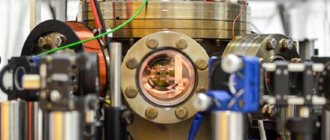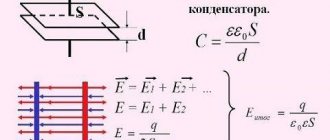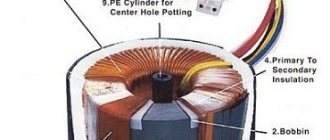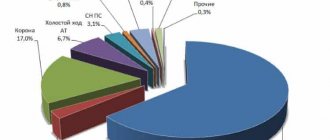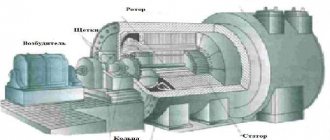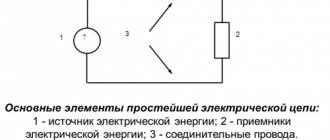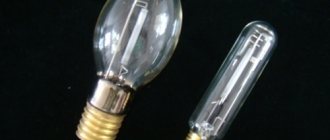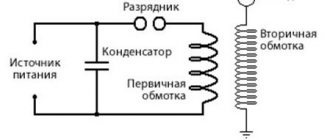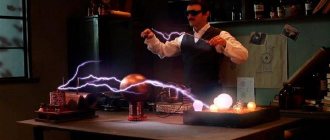Usage
They are trying to use the recovery principle in Formula 1 cars: a rare case when the technology was tested on production cars and then offered to the queen of motorsport. True, the designs of the so-called KERS (Kinetic Energy Recovery System) are more sophisticated here. Most teams use electric recuperation. Williams has an ultra-compact flywheel built into the box, which spins up when braking, accumulating mechanical energy and then releasing it back to the wheels:
A revolution that was not noticed. Recovery becomes the new generation
Techno-portals and Habr in particular have written more than once about recovery and possible options for the industrial implementation of this principle, which allows saving energy costs. There were many questions regarding the life cycle of regeneration systems, the real efficiency and the cost of a serial solution. Interesting theoretical calculations, for example, were previously presented here. Today's calculations show that modern recovery systems are capable of, if not surpassing, then at least equaling the energy generation potential of the entire renewable energy industry and significantly changing the rules of the game in this market.
Recuperation – reinventing the wheel? No
The technology began to be used in the 20th century. From a school physics course we know that any electric motor not only consumes energy, but can also produce it itself. This happens during braking. When the voltage is removed from the stator winding of an electric motor, it begins to generate electricity on its own. For example, in railway transport, the energy generated by the engine is transferred to the general power grid through traction substations or through a contact network - directly to other trains. This is exactly what they did in the Moscow metro during the Soviet era, when the capital’s “subway” managed to collect and reuse up to 50% of the electricity. Yes, our metro was skilled in the ESG agenda when it was not yet a trend.
The moment the train slowed down at the station clearly coincided with the departure of another one - the one going in the opposite direction. As a result, the energy from braking one train became fuel for another. But due to the growth of the Moscow metro and the prioritization of passenger traffic over saving options, the recovery balance was lost. Therefore, so far it has been possible to collect only about 10% of the energy. The rest goes into braking resistors, which generate heat that must be removed from the subway tunnels. By the way, about 53% of the electricity consumed by the tunnel ventilation system is lost to remove these excesses. It is second only to the consumption of rolling stock and amounts to 0.8–1.2 million kWh per year (example calculation for the Novosibirsk metro). This kind of energy wasted into the air even received a name in the industry - “energy waste.”
Heating of braking resistors in the London Underground. The problem with heating air in metro tunnels is not unique to our country.
Thermal footprint of a braking train. This energy can be reused or dissipated aimlessly into the atmosphere
Why is the industry returning to this topic and starting to discuss options for the widespread use of the recovery principle?
There are a number of objective reasons for this, which we will try to consider.
Three main factors can be noted that moved the issue of introducing recuperation systems from an (almost) dead point:
- The emergence of new materials (modern electrolytes);
- A radically different form factor of a modern supercapacitor cell;
- The global environmental agenda with ever new requirements for industry.
There is little point in discussing which of these factors is primary and what was generated by what; here everything can come down to the “chicken and egg dilemma.” Let's try to figure out what is actually happening now and how this can affect the entire electricity industry.
At first glance, the “energy waste” we mentioned above is not as harmful as emissions from factories or power plants and until recently they were not a topic of environmental debate. And such an important aspect as wasting a colossal amount of electricity today stands like an elephant in the room and is becoming more and more difficult to ignore every day.
See for yourself: ≈ 50% or 13,468 TWh of all energy generated in the world is consumed by electric motors, which can return up to half of this volume thanks to recuperation.
There is no need to argue about the need to use these already existing, environmentally friendly energy resources. More and more new renewable energy facilities (RES) are being built around the world every year. At the end of last year, it was already written on Habré that the International Energy Agency was reporting that in 2021 a world record for the production of renewable sources would be set. This exceeds the achievements of 2022. By the end of 2022, 290 GW of additional green energy production capacity will be commissioned. Solar power plants continue to literally “seal” agricultural areas around the world, wind turbines cut into the ecosystem, inevitably influencing it, and hydropower is not available everywhere. And this despite the fact that no one has yet proposed clear and economically feasible methods for recycling used renewable energy capacity. Even a country like the United States, which is very attentive to environmental issues at least on its territory, is still forced to simply bury used wind turbine blades due to the impossibility of recycling them.
Therefore, today more and more industries are thinking about how to take the already generated terawatts per hour of electricity, which are simply thrown into the air.
New opportunities
Safety is a priority concept when we talk about transport and options for optimizing its use.
The emergence of a new, fireproof electrolyte based on propylene carbonate for supercapacitors has made it possible to create recovery systems for transport, and in particular the subway, with its enclosed spaces. Strict requirements for these characteristics did not allow the use of systems with electrolytes of the previous generation, which released hydrocyanic acid vapors during combustion. The new electrolyte is safe and environmentally friendly in this regard. In composition, it is perhaps most similar to lipstick.
The second important factor was the form factor of the new prismatic shaped supercapacitor cells, which became the key to the absence of heating of the contact part.
The current collection on these “tiles” is distributed over the entire surface, which makes it possible to abandon the forced cooling system. At the same time, the classic appearance of supercapacitor modules is most similar to a Cola can, where current collection is represented by two wires on the edge of the cell. Performing their main function (receiving and delivering a large amount of energy at a time), these places heat up and are a kind of Achilles heel of the previous generation of supercapacitors. Unlike prismatic cells, can solutions also take up much more volume. And to the volume we also add a cooling system.
The emergence of a new electrolyte and form factor has opened up the possibility of equipping a wide range of vehicles with recuperation systems, as well as other equipment using electric motors.
Tests conducted by Russian developers and manufacturers of recovery systems from the TEEMP company have shown that, for example, a tram can regenerate about 40% of the energy consumed during acceleration. This is 142 kWh per day from just one vehicle - figures comparable to the daily output of a 1000 m² solar park.
There are about 7,700 trams in Russia. If you put an energy storage system on them, they will generate about 400,000 MWh of electricity per year. This will save more than $29 million on fuel and reduce CO2 emissions into the atmosphere by 180 thousand tons.
If we transfer the indicators to the scale of a company such as Russian Railways, it becomes clear that the potential for budget savings can be enormous. The largest railway carrier consumes about 6% of all electricity generated in Russia. Why not collect this energy and reuse it? This will help you save up to 50% of your energy budget and reduce your carbon footprint.
"Transport" may be different
With the advent of hybrid cars, recovery also came to Formula 1. Especially for it, in 2009, they created KERS - a kinetic energy recovery system. And the benefits of it are not only in energy saving. The system gives the cars a boost, a kind of “nitro” - just like in computer games. In 2014, two recovery systems began to be installed in cars: in total, they increased their power by 160 hp.
How the system works: the transmission collects energy that is generated during braking. The generator resistance provides additional braking force, and at the same time helps to charge the car's batteries. When additional power is needed, the pilot simply presses a button on the steering wheel and receives additional acceleration. The electronics send the battery charge to the generator, and it produces 80 additional hp. for almost 7 seconds.
The appearance of the system even influenced the car control strategy. Pilots began to use the technology when exiting corners at slow and medium speeds. KERS is also used in competitive areas - to overtake an opponent or defend a position in the race.
Speaking about the new form factor, it can be noted that this is exactly one of those cases when the occupied volume and weight of a supercapacitor module is critical.
Sebastian Vettel explains how to use KERS correctly
Just like on racing cars, recuperation systems are installed on regular production cars - they store energy during braking and release it back to the engine when needed.
The system operates on vehicles as part of the start-stop function. When the internal combustion engine is under heavy load, the generator is switched off to save energy. And it starts working again at the moment of braking - thanks to this, the battery is charged. However, this contains a fair degree of slyness among marketers - the efficiency of such recovery systems is not indicated anywhere and often does not exceed 3%, since a lithium-ion battery is traditionally used as a storage device, which is not capable of receiving the entire volume of potentially recovered energy.
Where else?
Recuperation finds its application not only in transport. Elevators and cranes are one of the best and most efficient platforms that can turn into a makeshift power plant simply based on the physics of their operation. According to Swedish researchers from Gävle University, when using recovery systems based on supercapacitors on material handling equipment,
is ~75% of what was spent.
In fact, the entire elevator system can also serve as generation. This confirms the experience gained by Otis (transferring energy to the home network) and the Spanish solution Epic Power (transferring to storage and subsequent use). Both companies confirmed an effectiveness rate of 75%.
What's new with us?
Energy Recycler. This is the name of the recovery system based on modern supercapacitors, which is produced by the TEEMP company. The technology can be used for trams, trains and electric trains. It works on the basis of supercapacitors, which allows you to recover much more energy obtained from braking than lithium-ion drives can do - 40% versus 3-5%. The system uses a new generation safe electrolyte, and the declared resource exceeds 1 million charge-discharge cycles. In addition, this system does not require regular maintenance.
Executive Director of JSC "NPP "EPRO", Ph.D. Vladimir Anatolyevich Sharyakov:
“We have been working with electric vehicles since 1991 and we have had a good opportunity to study many of the nuances of its use, to understand how energy is consumed and where there is potential for saving it. The tests that we conducted jointly with the Moscow company TEEMP on tram transport in St. Petersburg showed that modern recovery systems based on supercapacitors can increase the energy efficiency of rolling stock by 40%. And this energy, collected by recovery into supercapacitors, can be used on site to accelerate the tram or increase its autonomy in areas where there is no network power. In this case, losses associated with energy transmission through the network can be avoided. It would be simply unreasonable to ignore such new tools for energy conservation in modern realities.”
Energy ReCycler proved its effectiveness in the first tests, and is now being used in other test projects. According to engineers, the payback period for development in Russian conditions is about 5 years.
Ultra-compact flywheel
Having tested KERS on formulas, Ferrari tried the recovery system on a road car.
Based on the 599 GTB Fiorano coupe, the first ever Ferrari hybrid, the 599 GTB HY-KERS, appeared. The six-liter gasoline engine is assisted during acceleration by a 74-kilowatt electric motor, which generates energy during braking and allows driving on electric power for up to 5 km.
How does the recovery system work?
Determination of power quality by analyzers
The operation of such a system can be considered using the example of air recovery during room ventilation. When replacing air in a room, the device transfers part of the heat from the removed air to the supplied flow.
Important! With this action, no mixing of flows occurs. In this way, the greatest energy efficiency of the room is achieved with low heat transfer efficiency.
The increase in heat transfer in this case is influenced by:
- increase in temperature difference;
- the ratio of the area of thermal contact to the mass of air flowing through the heat exchanger.
Reducing heat loss during room ventilation is the main task of the recovery system. Most of the heat does not leave the room uselessly; it is heated by the air supplied from outside.
Air recuperator
Does an electric bike need recuperation?
The recovery function should not be considered a useless option, but you also should not expect a fantastic effect from it. If you expect the controller and wheel motor operating in power generation mode to help you increase your mileage on a single charge, you will be disappointed with the recuperation function in action. It won’t provide big savings, but it will allow you to travel a couple of kilometers more on one charge. In some cases, such a reserve can be very useful. In addition, dynamic braking has a beneficial effect on the durability of brake pads.
A regenerative system is a useful addition to an electric bicycle, but its functionality should not be overestimated. Other methods will help extend the range of an electric bike on a single charge - using a more capacious battery, riding in economy mode, and combining electric drive with pedaling.
And instead of a direct-drive motor that supports the recuperation function, in most cases it is better to use gear motors with an overrunning clutch. They use battery energy more economically, weigh lighter and do not slow down in the absence of power.
Find out in our previous article about the reasons for the growing popularity of electric bikes - 7 reasons to buy an electric bike.
Braking of asynchronous motors
Reducing the speed of asynchronous electric motors is carried out in three ways:
- recovery;
- opposition;
- dynamic.
Regenerative braking of an asynchronous motor
Regeneration of asynchronous motors is possible in three cases:
- Changing the frequency of the supply voltage. Possible when powering the electric motor from a frequency converter. To switch to braking mode, the frequency is reduced so that the rotor rotation speed is greater than synchronous;
- Switching windings and changing the number of poles. Possible only in two- and multi-speed electric motors, in which several speeds are provided structurally;
- Power descent. Used in lifting mechanisms. These devices are equipped with electric motors with a wound rotor, the speed of which is adjusted by changing the value of the resistance connected to the rotor windings.
In any case, when braking, the rotor begins to overtake the stator field, the slip becomes greater than 1, and the electric machine begins to work as a generator, delivering energy to the network.
Scheme of an electric motor with a wound rotor
Opposition
The counter-switching mode is carried out by switching the two phases powering the electric machine between each other and turning on the rotation of the device in the opposite direction.
It is possible to switch on with counter-connection of additional resistances in the stator circuit or wound rotor windings. This reduces current and braking torque.
Important! In practice, this method is rarely used due to currents exceeding 8-10 times higher than rated (with the exception of motors with wound rotor). In addition, the device must be turned off in time, otherwise it will begin to rotate in the opposite direction.
Dynamic braking of an asynchronous motor
This method is carried out by applying a constant voltage to the stator winding. To ensure trouble-free operation of the electric machine, the braking current should not exceed 4-5 no-load currents. This is achieved by including additional resistance in the stator circuit or using a step-down transformer.
Direct current flowing in the stator windings creates a magnetic field. When it crosses, an EMF is induced in the rotor windings and current flows. The released power creates a braking torque, the strength of which is greater, the higher the rotation speed of the electric machine.
In fact, an asynchronous electric motor in dynamic braking mode turns into a direct current generator, the output terminals of which are short-circuited (in a machine with a squirrel-cage rotor) or connected to an additional resistance (an electric machine with a wound rotor).
Principle and features of recovery
Regenerative braking is a 2-stage process that occurs through the interaction of the motor-generator and the battery. Thanks to the generator, kinetic energy is transformed into electricity, and then into the chemical energy of the battery. The amount of energy generated is significantly influenced by the length of hilly slopes on the route, their slope angle, the effectiveness of the brake system, the quality of the motor, controller and battery.
According to calculations, in order to fully replenish the battery charge of an electric bike when descending slopes, you need to descend a very steep slope over 322 km long. In practice, with the help of recovery it is possible to replenish a small part of the energy - about 5%. In addition, none of the modern types of batteries can accept energy at a rate corresponding to the intensity of its release during braking. But new techniques continue to be developed for more efficient use of regenerative braking energy using special capacitors.
Efficiency
Everything here is much more interesting. The effectiveness of regenerative braking is a measure of how much the system can improve a vehicle's range.
As you might have guessed, the rate varies significantly depending on factors including driving conditions, terrain, and vehicle size.
Driving conditions have a significant influence. You'll see significantly better performance in the city, where you have to slow down multiple times at traffic lights or in traffic, than on the highway. The landscape also plays a significant role. Going uphill doesn't give you much of a chance to stop, but when going downhill, you often need to slow down for safety, which will allow you to convert more kinetic reserves. On long slopes, the regenerative system can be used almost non-stop to regulate speed, thereby recharging the battery over an extended period.
Vehicle size may be the most significant factor in this metric for the simple reason that heavier bodies contain much more momentum and kinetic energy. Just as a larger flywheel is more efficient, a four-wheeled car has much more kinetic energy when moving than a motorcycle or scooter.
Efficiency of regeneration system in cars
Comparison data can be somewhat complex. Tesla cars produce 60kW of regenerative braking power during a hard stop, but that doesn't answer the more interesting question. We want to know how much energy we regenerate during a ride, not how strong our brakes are every time we mash the pedal.
Luckily, a number of Tesla drivers have been able to calculate their energy return using various data tracking apps. Model S owners reported recouping about 32% of their total energy consumption when ascending and then descending hilly terrain. Thus, with this coefficient, the travel increases from 100 to 132 km. Another owner talked about 28% energy recovery (forum in Danish). The rest write that during regular trips, an average of 15-20% of total consumption is returned.
Other automakers also use this system in their cars. For example, Audi says that the regenerative braking technology installed in the Audi Q7 will save up to 3% on fuel. But if we take only electric cars, the company promises a 30% increase in driving distance in their upcoming Audi e-Tron model.
The effectiveness of regenerative braking in bicycles, scooters, skateboards and other personal EVs
For small electric vehicles, the numbers are not so optimistic. On many bikes with regenerative braking, the average is 4-5% regeneration, with a maximum of 8% in hilly areas. Other personal electric vehicles, including scooters and skateboards, have similar results.
As we wrote above, such small numbers are largely due to the lower weight of these funds. They simply don't have much momentum and therefore have less kinetic energy to convert back to the battery.
Does it even matter how well regenerative brakes work?
In the electric bike industry, regenerative braking can sometimes be used more as a marketing tool than as a worthwhile innovation. Since the technology is generally only possible in electric bikes with larger gearless motors, manufacturers of such bikes will definitely use such efficient development in their models. At the same time, companies that produce bikes with mid-size drives and other geared motors that are not adapted for regenerative braking classify the technology as ineffective and simply do not install it.
The truth is that for small and personal vehicles, recuperation is not as effective as in large electric vehicles, but the feature still has many benefits.
One of the most significant advantages of the development is its use as another slowing force for small personal EVs. For example, the Xiaomi M365 electric scooter uses only regeneration stopping for the front motor wheel, while the rear wheel uses a traditional disc brake. This means the scooter has two independent retarding elements with one control lever to activate them, reducing cost, weight and assembly complexity.
Recuperation also allows for a stopping mechanism to be introduced into skateboards, a feat that was previously accomplished by rubbing the sole of your shoe against the pavement. This feature is very useful for safety due to the emergence of popular models reaching speeds of more than 30 km/h.
Another benefit of regenerative braking is that it extends the life of conventional brake parts such as cables and brake pads. Constantly maintaining and replacing these parts is annoying, and when you consider that electric bikes and scooters travel much further and faster than their non-electric cousins, the parts wear out much sooner.
After all, regenerative braking will never be as useful in small vehicles as it is in larger ones, simply due to the laws of physics. So the lack of technology on electric bicycles and other small EVs for personal use is not something terrible. However, the benefits of using this development, without taking into account simple power interception, cannot be ignored. And hey, you'll get free 5% range growth every day!
Generator operation control
This mode was partially touched upon earlier when recuperation on BMW cars was considered. The point is that the generator turns off when the car accelerates, which, together with the engine operating in start-stop mode, makes it possible to reduce fuel consumption. But when the speed is reset, the generator is connected and the battery is charged.
However, there are conditions under which start stop is blocked. One of them is the battery charge level. When it drops to a value equal to seventy-five percent of the nominal value, the system turns off. In addition, the driver can forcibly disable the start-stop mode from the control panel.
Pros and cons of such savings
It is worth noting that not everything is so simple.
- The reason is that movement in the acceleration - braking mode, even in the urban cycle, constitutes a small part of the total time. Because of this, recuperation turns out to be ineffective and does not sufficiently charge the battery, but only complicates the machine.
- However, on hybrid vehicles, recuperation provides up to thirty percent energy savings. At the same time, it must be taken into account that leading manufacturers - BMW, Audi, Kia Motors and others - are quite widely introducing recovery in one form or another in the design of their cars.
Recuperation is very widely used in racing cars, such as Formula 1, in hybrid cars, but ordinary cars equipped with similar systems allow more efficient fuel consumption and provide fuel savings through the use of braking energy and special driving modes.
How good is regenerative braking?
To properly evaluate this technology, we need to look at two different parameters: coefficient of performance (COP) and efficiency. Despite the apparent similarity, they are completely different. Efficiency indicates the success with which “lost” braking power is captured. Did everything turn into heat or was it possible to transfer the kinetic potential in the right direction? Efficiency, on the other hand, refers to how much impact regenerative braking has on travel distance. Will your range increase significantly, or will you not even notice much of a difference?
(visualization of the operation of the braking energy regeneration system in VW - Volkswagen cars)
What is regenerative braking
Moving objects have kinetic energy, and when the brakes are applied to slow down, all that power needs to go somewhere.
Let's go back a little to the past, the ancient times of the era of Neanderthals or simply cars with internal combustion engines. In such cars, the brakes are based solely on friction, so when decelerating, all the energy turns into heat, which means it goes nowhere, it is simply lost in the environment.
But we still evolved and found better ways. Regenerative braking uses the EV's motor as a generator to convert the bulk of the kinetic energy lost during deceleration back into the battery. The next time the car accelerates, it uses up some of the energy previously saved from regenerative braking.
(BMW i3 regenerative system)
It's important to understand that regenerative braking is not a magical range extender for electric vehicles. It doesn't make machines more efficient per se, it just makes them less inefficient. Basically, the best driving option is to accelerate to a constant speed and then never touch the brake pedal. Since it takes extra effort to slow down and then get back up to speed again, you'll get a much larger range of motion by simply not slowing down in the first place.
But obviously this is not realistic. Since we have to reduce speed multiple times, regen is the next best option as it makes the process less wasteful.

